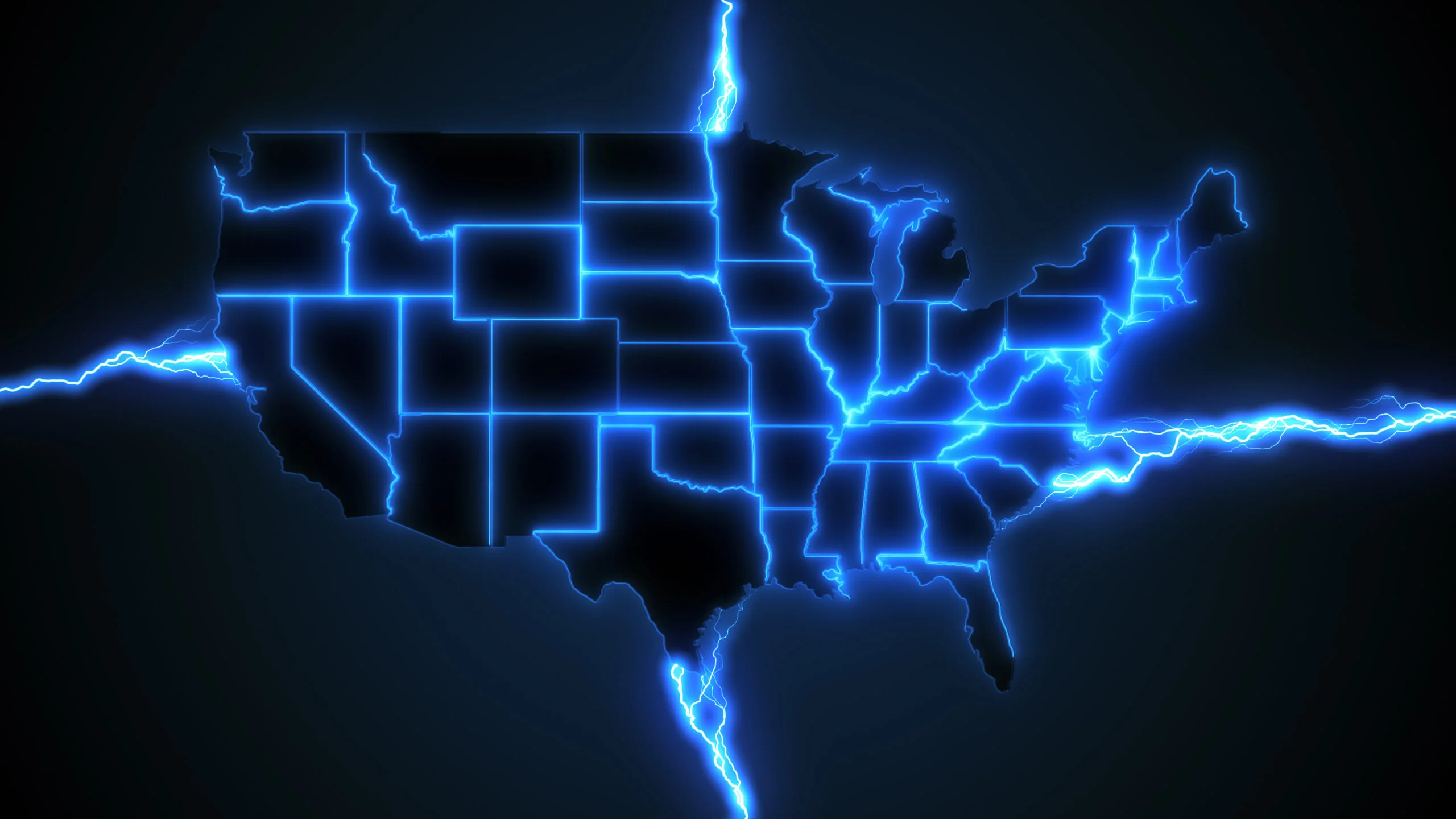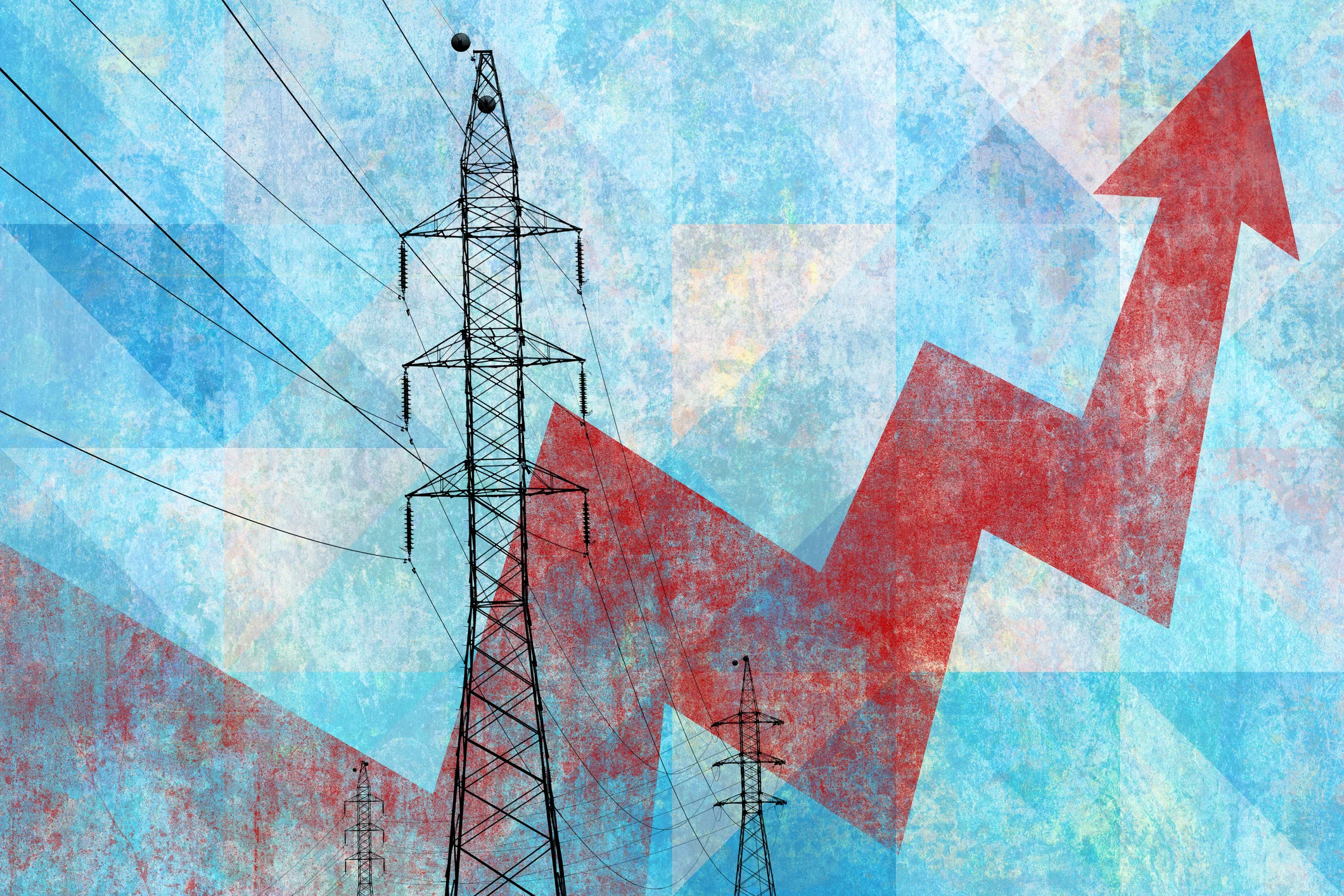There is no national U.S. electric grid. Instead, the U.S. relies upon several interconnected grids separated by region. Not only is each section of the grid demarcated by its area, but individual utilities are accountable to regulatory bodies that shift state-by-state to meet local needs. This complexity has challenged grid operators to navigate the morass of interconnections to meet demand while satisfying both local regulatory bodies and the global decarbonization and electrification necessary to mitigate the effects of climate change during the energy transition. What can our grid’s interconnection regions tell us about the challenges of an evolving electric grid? Our guide to electric grid regions identifies interconnection regions and explores the challenges and solutions needed to support those geographical locations.
Identify U.S. Grid Regions
The United States is divided into several interconnected electric grid regions. Each region operates independently, with its unique characteristics and challenges. Understanding these differences helps utilities and policymakers identify potential vulnerabilities and implement strategies to improve grid reliability and stability. There are three main regions in the U.S. electric grid:
- The Eastern Connection
- The Western Connection
- The Texas Interconnected System
The North American Electric Reliability Corporation (NERC), a not-for-profit international regulatory authority, further subdivides these regions. NERC covers an enormous territory, serving nearly 400 million people across the U.S. and Canada. As such, NERC is subdivided into six distinct regional entities:
- Northeast Power Coordinating Council (NPCC) – Located in the Atlantic Northeast in the upper areas of New England and into Canada, the Northeast Power Coordinating Council (NPCC) is one of six NERC regional entities, established to ensure safe and reliable grid services.
- ReliabilityFirst (RE) – Located in the Midwest and New England regions of the U.S., the ReliabilityFirst organization is dedicated to fostering a reliable and secure grid.
- Southeast Electric Reliability Corporation (SERC) – The Southeast Electric Reliability Corporation is a regional entity located in the southeastern United States and was formed to ensure grid reliability and security in the area.
- Midwest Reliability Organization (MRO) – Serving central U.S. and Canadian territories, the Midwest Reliability Organization is designed to “identify, prioritize and assure effective and efficient mitigation of risks to the reliability and security of the North American bulk power system by promoting Highly Effective Reliability Organizations.”
- Texas Reliability Entity – The Texas Reliability Entity is, as the name implies, located in Texas, and serves the Electric Reliability Council of Texas (ERCOT).
- Western Electricity Coordinating Council (WECC) – The Western Electricity Coordinating Council serves the entire Western Interconnection, promoting bulk electric system (BES) reliability.
Additionally, there are several key operators within these six regional areas, each with a specific objective that meets the needs of customers. They are:
- Regional Transmission Organizations (RTOs): These are independent entities responsible for overseeing the transmission of electricity within their respective regions. Examples include PJM Interconnection, ISO New England, and MISO.
- Independent System Operators (ISOs): Similar to RTOs, ISOs are responsible for ensuring the reliability and stability of the electric grid within their jurisdiction.
- Electric Reliability Councils (ERCs): These organizations provide reliability assessments and recommendations for the electric grid.
As you can see, the North American grid is a complex, multifaceted collection of associated organizations, often subdivided to meet the needs of communities in urban and rural areas alike. In each case, the utilities located in these interconnections face a mounting number of challenges in meeting the decarbonization efforts needed to mitigate the effects of climate change, defray high peak energy purchasing costs, and minimize expensive grid upgrades.
The Big Picture: The Challenges of Each Interconnection
Because each interconnection region is geographically disparate, they all encounter unique obstacles to decarbonization. Now, let’s look at the challenges specific to each, and how demand flexibility initiatives can help meet decarbonization goals while enhancing grid resiliency and generating fresh revenue streams for utility operators.
Region: Eastern Interconnection
The Eastern Interconnection is the largest grid region in the US, covering the country’s eastern portion from Maine to Texas. It is divided into several Regional Transmission Organizations (RTOs), each with its own market rules and operations:
- PJM Interconnection: Serving the Mid-Atlantic and parts of the Midwest, PJM is the largest RTO in the US.
- New York ISO: Responsible for the New York State electricity market.
- New England ISO: Overseeing the New England states.
- MISO (Midcontinent Independent System Operator): Covering parts of the Midwest and South.
- ERCOT (Electric Reliability Council of Texas): Managing the Texas grid.
- Western Interconnection
- The Western Interconnection covers the western portion of the US, from California to Montana. The California ISO manages it.
For the last decade, each successive summer has set temperature records as the highest on record: it’s getting marginally hotter every year. For the Eastern Interconnection, 2024 was no different with a summer heatwave that caused massive spikes in demand. Beyond this specific challenge, utilities in the Eastern Interconnection represent an exceptionally broad spectrum, meaning that heat waves represent only one set of temperature extremes or environmentally-rooted challenges.
Solution: Demand Flexibility Initiatives
Research indicates that the distributed energy resource (DER) market is expected to nearly double by 2027. Distributed energy resources include solar, battery energy storage systems, electric vehicles and EVSE chargers, and smart home devices like thermostats and water heaters. While behind-the-meter DER assets create a greater load incumbrance on the grid, they also provide opportunities for load management. Through the use of Grid-Edge distributed energy resource management systems (DERMS) utility operators can aggregate and manage these otherwise disparate devices for use in one of several demand flexibility initiatives.
These strategies include demand response, EV managed charging, or BYOD programs, conservation initiatives that decrease usage during peak periods of consumption. For each, utilities enlist participating customers to decrease usage during peak periods of demand, defraying high peak energy purchases, while in turn enhancing grid resiliency. Ultimately, these tactics have been repeatedly proven useful in increasing grid resiliency and minimizing high peak energy costs.
Region: Texas Interconnection
The Texas Interconnection is unique because it is solely managed by ERCOT, providing a distinct market and operational environment. It has more than 54,100 miles of transmission lines. Unlike other US grid regions, Texas operates as an isolated grid, which means it is not interconnected with the Eastern or Western Interconnections. This can provide both advantages and challenges.
Over the last several years, the Texas grid has been hit hard by volatile weather events and temperature extremes. That includes expected events like seasonal hurricanes or heatwaves, but also erratic weather behavior like the winter storm of 2021. Because the Texas Interconnection is isolated, meeting demand during extreme grid events can prove incredibly challenging. Fortunately, there are a few solutions that not only help meet demand but defray high costs: virtual power plants.
Solution: Virtual Power Plants
According to the Department of Energy (DOE), the U.S. needs between 80-160 GW of virtual power plant capacity by 2030 to continue to meet increasing electric demand. Currently, the DOE reports that the U.S. produces around 30-60 GW of virtual power plant capacity, primarily through the use of demand response programs. These programs have repeatedly proven valuable in both winter and summer months for ERCOT. In fact, Texas is on track to produce one of the cleanest grids in North America, and virtual power plants contribute to that overall growth.
Beyond that, as a decentralized energy resource, virtual power plants represent an especially unique opportunity for ERCOT as an otherwise isolated entity. Virtual power plant technology is enriched through the use of Topline Demand Control, the novel realization of Grid-Edge DERMS platforms, AI, model predictive control, and forecasting software. With Topline Demand Control, grid operators can request a specific return of energy from any one of their virtual power plant strategies, and through real-time device optimization and control, the system will reliably produce that outcome. This is an especially useful decarbonization strategy, both in providing a decentralized alternative within an otherwise closed grid (ERCOT) and in yielding a reliable outcome every time.
Region: Western Interconnection
As noted, the Western Interconnection is tasked with balancing growing renewable energy integration, maintaining transmission capacity over vast distances, and ensuring the grid’s reliability and resilience amidst regulatory complexity. This interconnection region has proven increasingly susceptible to climate and wildfire risks, which have grown in frequency and volatility over time, causing millions in infrastructure damage every year.
Additionally, the Western Interconnection represents an incredibly vast and often rural area that includes forests, deserts, and mountainous terrain, often which is rural and sparsely populated. To meet long-distance transmission goals across diverse and often difficult terrain. These regions are plagued with drought in some areas and heavy cloud cover which renders decarbonization tactics like solar intermittent.
Solution: Localized Dispatch
First, it’s worth noting that demand flexibility programs are still incredibly viable and useful as decarbonization methods, to meet regulatory standards, and to increase grid reliability and load flexibility. Second, through the use of a Grid Edge DERMS, utilities can aggregate power across their territory, distributing it regionally to meet needs. In the case of wildfires or other damaging weather systems, flexible dispatching functionality enables the localized dispatch of resources to meet some or all electric demand needs. Furthermore, localized dispatch can be used to halt power to areas affected by damage with the intent of minimizing the risk of spreading wildfire through active electric lines.
The North American Electric Grid Regions & Decarbonization Challenges Conclusion
Understanding the North American electric grid regions is essential for understanding the complexities of the energy landscape and the challenges and opportunities facing the nation’s energy infrastructure. Still, the North American electric grid continues to face numerous challenges. For example, many parts of the grid are aging and need upgrades. According to the U.S. Department of Energy, approximately 70% of the US transmission grid is over 25 years old. These challenges are amplified by the ongoing twin threats of extreme weather events and increased cybersecurity threats. Fortunately, the increased penetration of behind-the-meter DER assets is useful as decarbonization tools while in turn enhancing grid resiliency and minimizing high peak energy costs.





